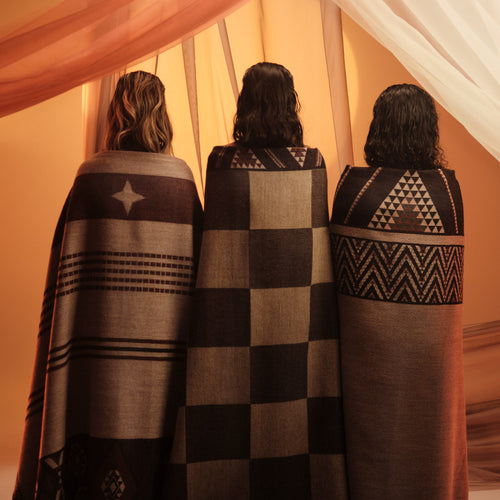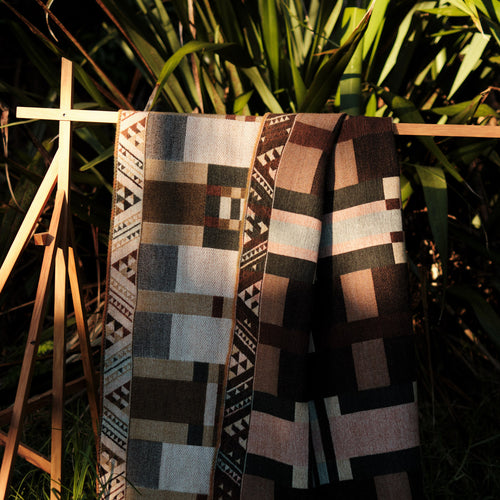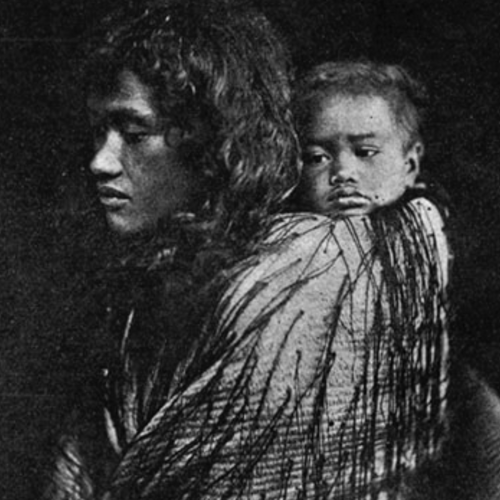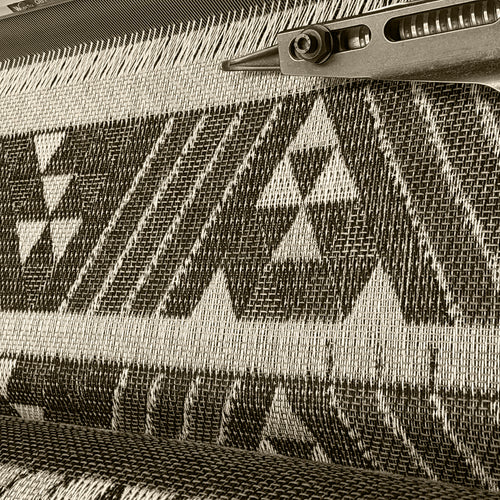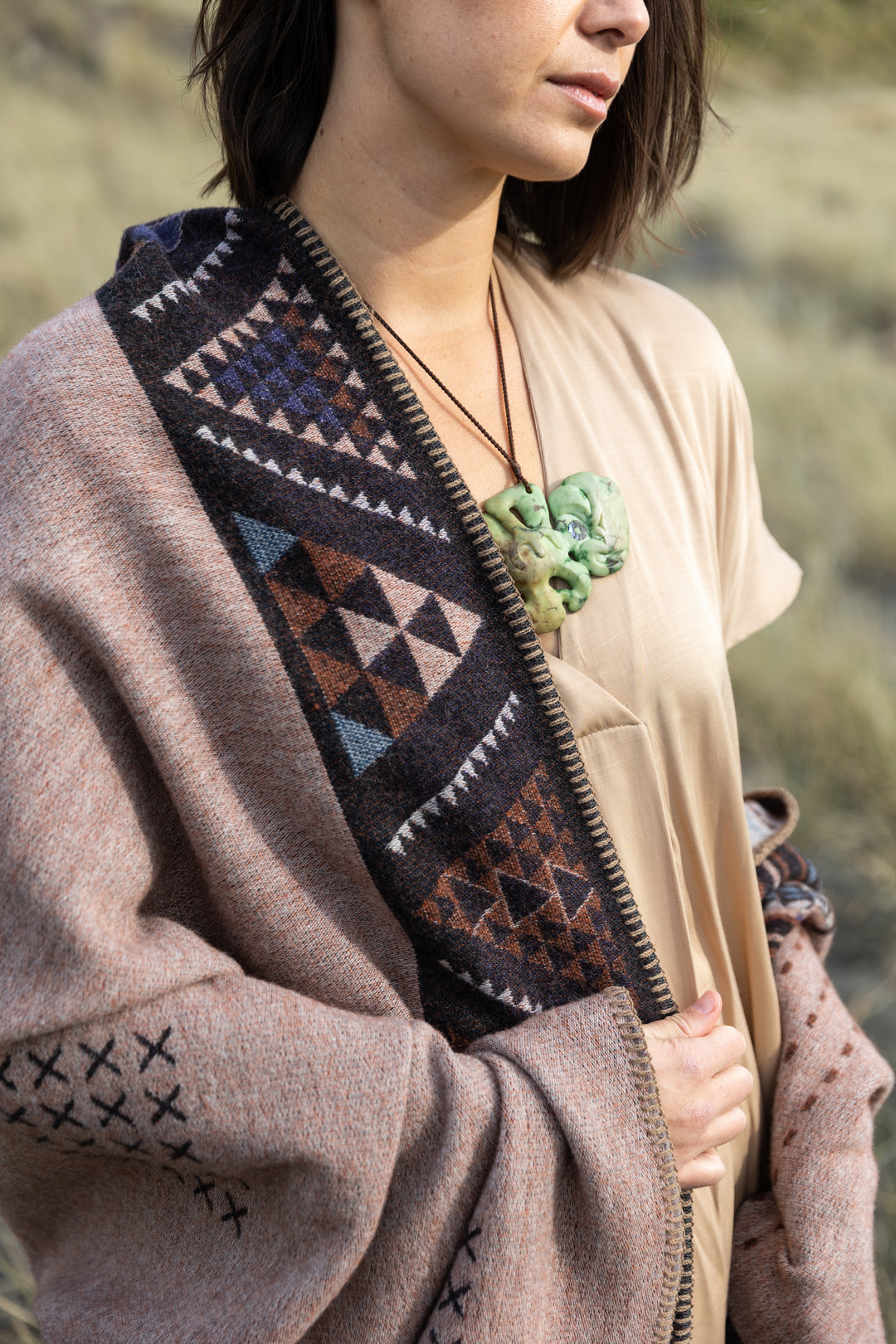Te Amorangi - Behind the Weave
Te Amorangi
The bearer of the day.
This blanket design highlights an important attribute of leadership, our ability to engage the people, to provide a broader understanding and awareness to better coordinate ourselves and work together to win the day.This is reflected in the body of the blanket, ngā tūranga rau a te toa, the many strategic movements of the war party.
Te Amorangi is a term that can describe a leader or a person who ‘bears the responsibility of the day’. Those empowered by the people to lead the way, shouldering the weight of the procession, making clear the pathway forward.
The large tāniko inspired borders denote status and prestige.
The term Te Amorangi also identifies the spiritual leaders within our communities, those with the knowledge of how to progress and transition through space while ensuring the spiritual safety and well-being of the people. This is reflected in the side borders.
The reds highlight the red clay or kōkōwai, a sacred color depicting the permanence of Papatuānuku, Earth Mother and our intergenerational relationship as mankind navigating her terrain, for our brief moment.
The waharua in the paepaeroa, the main border, reflect the nature of decision making and commitment, the courage needed to engage effectively, communicate with clarity and stand upon your word.
He pikonga wai, a chiefly symbol denoting mana motuhake or autonomy. The blue and whites in this motif also acknowledge water as a conduit, connecting the physical and metaphysical, and as waterways connect the people, so too does a great chief. This pattern serves as a conduit in the main border.
This design pays homage to our communicators, those who lead in front, by example, with confidence, humility and transparency.
They are a true representative of the collective thought, they give voice to that understanding to empower forward movement of the people, the many of one mind. These are some of the attributes of Te Amorangi.
Read more about this series:
The Wayfarer Story - Part 1
The Wayfarer Story - Part 2
The Wayfarer Story - Part 4
